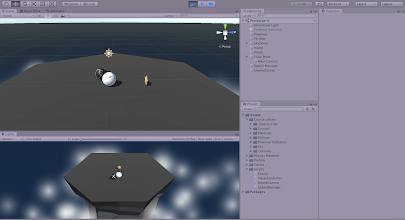This week I completed the first three tutorials for building an arcade-style sumo battle game. In the first set of tutorials, I imported the necessary assets and brought a sphere into the scene then applied a texture to the sphere. I learned how to give the main camera a focal point so that it can smoothly rotate around the play area. Following this, I learned how to make the ball roll towards the camera no matter what direction it is facing.
I brought another sphere into the scene to act as an enemy in the second set of tutorials. I was introduced to physics materials where I was able to give the enemy the ability to bounce the player away. I made a new script and added code that allowed the enemy to follow the player. I also created a SpawnManager script for the enemy and applied the code which would cause the enemy to spawn in a random area at the start of the game.
In the third set of tutorials, I brought in a star power-up and used the OnTriggerEnter method so that the power-up is destroyed when it comes in contact with the player. I learned how to send the enemy flying when the player bumps into them with a power-up and how to make this power-up temporary. I also applied an indicator around the player so they know when they have received a power-up.
I thought these tutorials had some useful methods that I can implement into my own game such as the power-ups and power-up timer.


Comments
Post a Comment